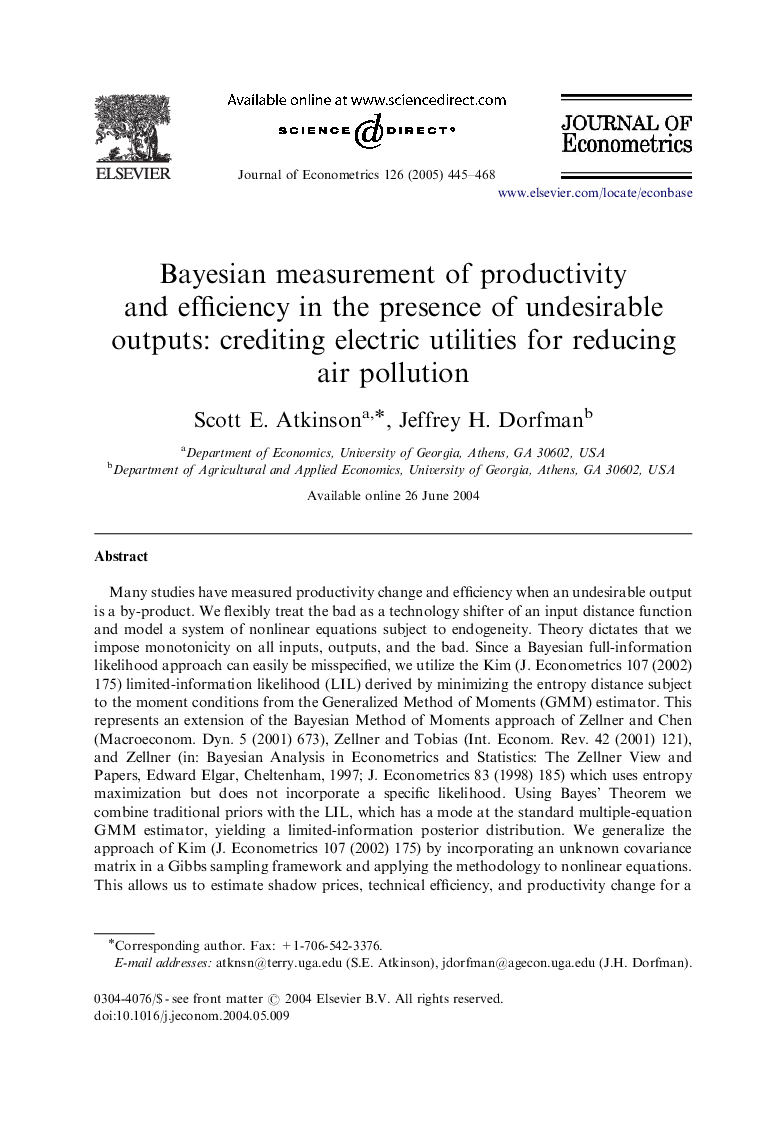| Article ID | Journal | Published Year | Pages | File Type |
|---|---|---|---|---|
| 9555337 | Journal of Econometrics | 2005 | 24 Pages |
Abstract
Many studies have measured productivity change and efficiency when an undesirable output is a by-product. We flexibly treat the bad as a technology shifter of an input distance function and model a system of nonlinear equations subject to endogeneity. Theory dictates that we impose monotonicity on all inputs, outputs, and the bad. Since a Bayesian full-information likelihood approach can easily be misspecified, we utilize the Kim (J. Econometrics 107 (2002) 175) limited-information likelihood (LIL) derived by minimizing the entropy distance subject to the moment conditions from the Generalized Method of Moments (GMM) estimator. This represents an extension of the Bayesian Method of Moments approach of Zellner and Chen (Macroeconom. Dyn. 5 (2001) 673), Zellner and Tobias (Int. Econom. Rev. 42 (2001) 121), and Zellner (in: Bayesian Analysis in Econometrics and Statistics: The Zellner View and Papers, Edward Elgar, Cheltenham, 1997; J. Econometrics 83 (1998) 185) which uses entropy maximization but does not incorporate a specific likelihood. Using Bayes' Theorem we combine traditional priors with the LIL, which has a mode at the standard multiple-equation GMM estimator, yielding a limited-information posterior distribution. We generalize the approach of Kim (J. Econometrics 107 (2002) 175) by incorporating an unknown covariance matrix in a Gibbs sampling framework and applying the methodology to nonlinear equations. This allows us to estimate shadow prices, technical efficiency, and productivity change for a panel of electric utilities, yielding results that differ substantially from those obtained using standard GMM.
Related Topics
Physical Sciences and Engineering
Mathematics
Statistics and Probability
Authors
Scott E. Atkinson, Jeffrey H. Dorfman,
